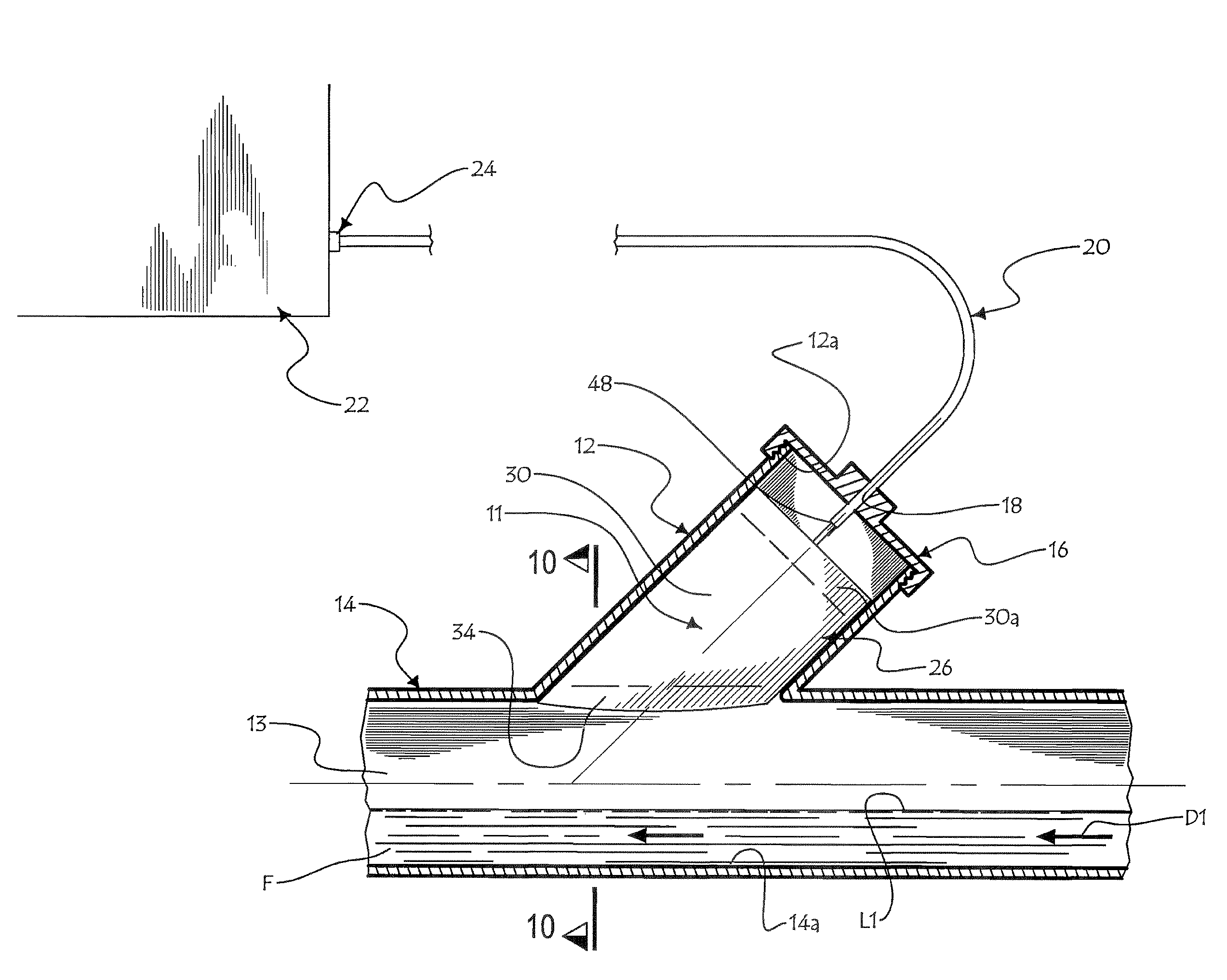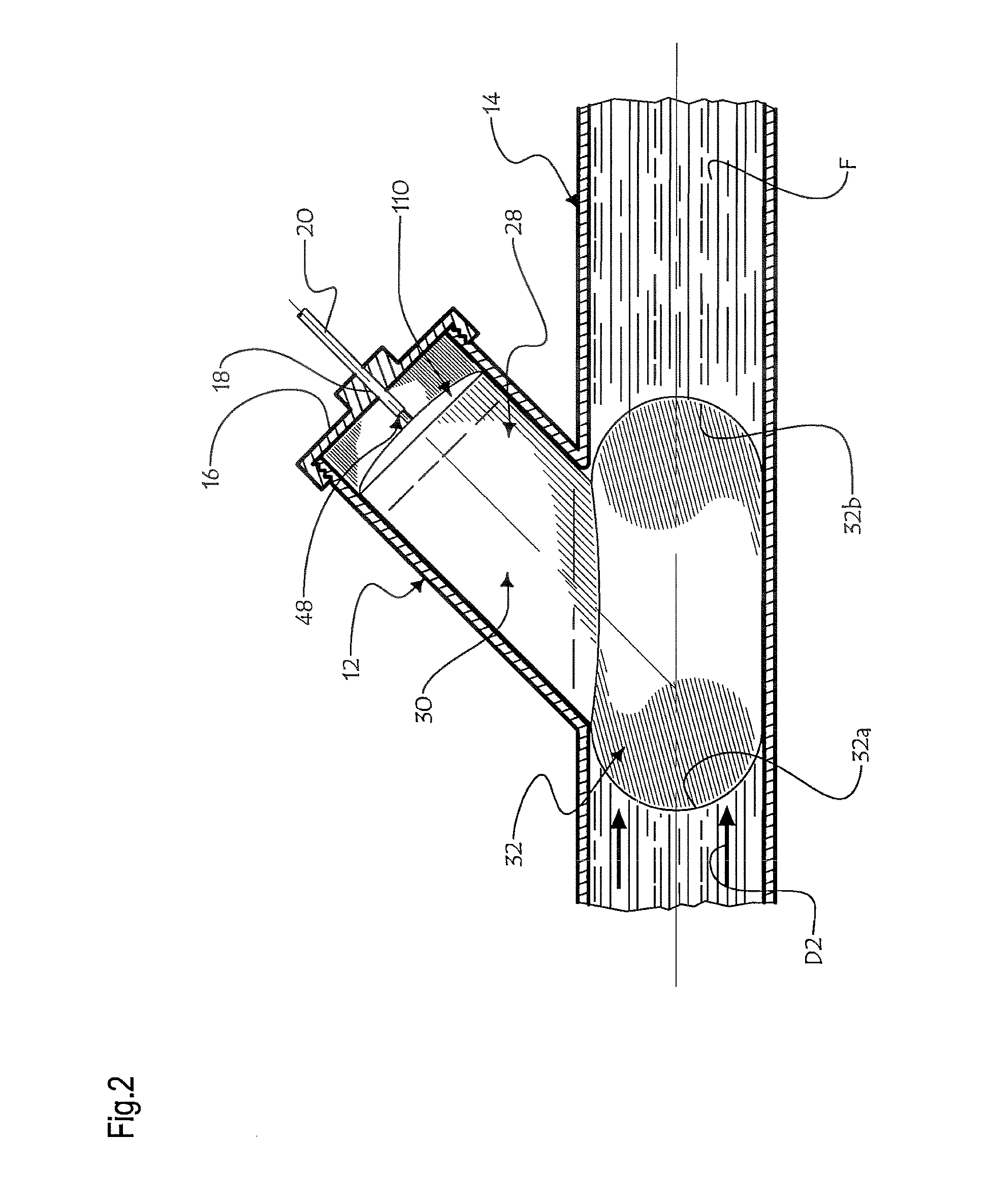Fluid backup preventing system, and method of use thereof
a backup prevention and fluid technology, applied in the direction of diaphragm valves, valve details, operating means/releasing devices, etc., can solve the problems of basement flooding from sewer line water backup flow, water backup risk, and clogging of main sewer line or branch line leading from the building to the main sewer line, so as to prevent fluid flow turbulence and rapidly and accurately detect the fluctuation of fluid
- Summary
- Abstract
- Description
- Claims
- Application Information
AI Technical Summary
Benefits of technology
Problems solved by technology
Method used
Image
Examples
Embodiment Construction
[0042]Referring to FIGS. 1 and 2, there is shown a fluid backup preventing system 11 in accordance with an embodiment of the present invention mounted into a clean-out duct 12 transversely opening into the channel 13 of sewer conduit 14. A fluid F, for example a liquid, may flow inside channel 3 at a low fluid level L1, along a normal flow direction D1.
[0043]The clean-out duct 12 is preferably provided with a distal threaded segment 12a so as to threadingly receive a mounting cap 16 provided with a cap aperture 18 extending centrally there through. The cap aperture 18 is configured and sized so as to fittingly receive at an intermediate section of a cable sleeve 20 for protectively enclosing various operative cables (pneumatic line 36 and electrical wires 43, 43′, 43″, 43′″) hereinafter disclosed and also for supporting the valve components in a suitable overlying relationship relative to the sewer conduit 14.
[0044]As mentioned previously, it should be understood that although the f...
PUM
 Login to View More
Login to View More Abstract
Description
Claims
Application Information
 Login to View More
Login to View More - R&D
- Intellectual Property
- Life Sciences
- Materials
- Tech Scout
- Unparalleled Data Quality
- Higher Quality Content
- 60% Fewer Hallucinations
Browse by: Latest US Patents, China's latest patents, Technical Efficacy Thesaurus, Application Domain, Technology Topic, Popular Technical Reports.
© 2025 PatSnap. All rights reserved.Legal|Privacy policy|Modern Slavery Act Transparency Statement|Sitemap|About US| Contact US: help@patsnap.com



